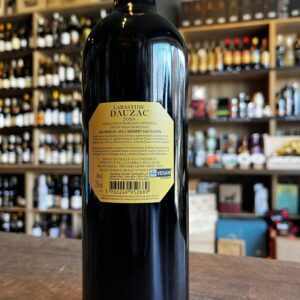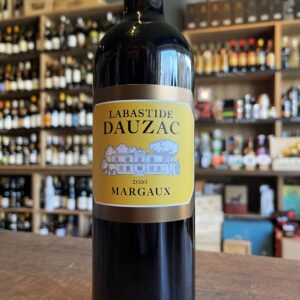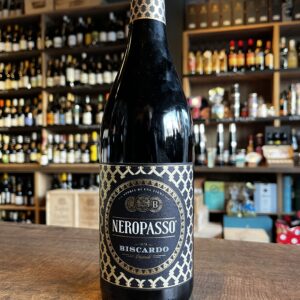-
Out of stock
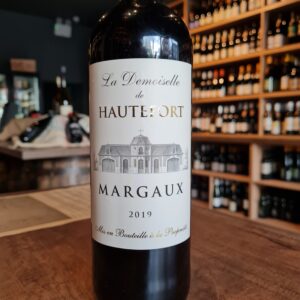 Slender and racy length, beautiful smoothness, noble freshness, very fragrant, without weakness in terms of the body and with the extension of high quality terroirs.
Slender and racy length, beautiful smoothness, noble freshness, very fragrant, without weakness in terms of the body and with the extension of high quality terroirs. -
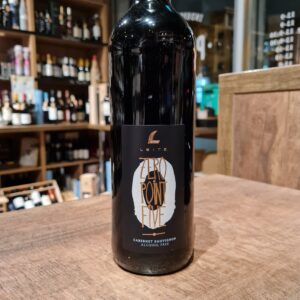 Eins-Zwei-Zero is a premium range of non-alcoholic wines created by award-winning winemaker Johannes Leitz. Using 100% Cabernet Sauvignon grapes from Argentina, these wines are produced with great attention to detail. The alcohol is removed through gentle vacuum distillation at low temperatures, allowing the natural flavours and delicate aromas to be preserved.
Eins-Zwei-Zero is a premium range of non-alcoholic wines created by award-winning winemaker Johannes Leitz. Using 100% Cabernet Sauvignon grapes from Argentina, these wines are produced with great attention to detail. The alcohol is removed through gentle vacuum distillation at low temperatures, allowing the natural flavours and delicate aromas to be preserved. -
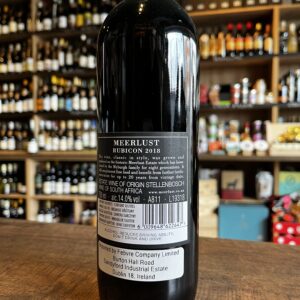
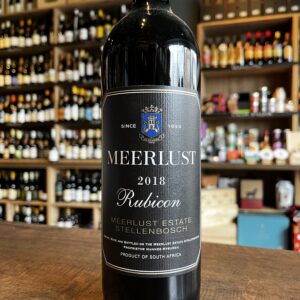 Meerlust Rubicon had a great impact on the history of South African wine. First made in 1980, it essentially set the pattern for Bordeaux blends in the country. There was of course a few pioners at this front that only used Cabernet Sauvignon varietal such as Kanonkop (Paul Sauer) in 1973 but as a blend as per Bordeaux style Meerlust changed the scene. According to Hannes Myburgh, his father was inspired by Julious Cesar words “Alea iacta est. The die is cast,” leading his troops towards Rome in 49BC. As this was a irreversable moment in history as there was no turning back after crossing the Rubicon river as this profoundly shifted Roman politics. Nico Myburgh from the 7th generation of the Meerlust estate and father of the current custodian, was holidaying in Bordeaux when he discovered that the terroir in this area of France was similar to that of the Eerste River Valley. Both have a distinctive climate, characterised by a cooling sea breeze. And both have a soil structure made up of decomposed granite and clay. The red wines produced by the two regions, however, were very different. Unlike the Western Cape’s specified cultivars, Bordeaux thrived on producing blends. Nico returned to Meerlust, filled with inspiration and the desire to create a blend of his own that would match those of the French. In 1980, after several years of experimentation together with winemaker Giorgio Dalla Cia, he announced the birth of the new blend. With proportions of 70% Cabernet Sauvignon, 20% Merlot and 10% Cabernet Franc, a new style of wine had been created in South Africa. Like Caesar, there could be no turning back. Nico and Giorgio had already considered a number of names for the new blend when Professor Dirk Opperman from the University of Stellenbosch, a friend of Nico’s suggested that “Rubicon” might be appropriate. The pair had, after all, crossed a new frontier – and changed the way South Africans thought about red wine. The Cabernet Sauvignon, Merlot, Cabernet Franc and Petit Verdot vineyards are hand harvested from February through to March and each individual vineyard block is kept separate throughout the fermentation process and monitored until the moment of blending.In wintertime, after malolactic fermentation has allowed the personality of each vineyard to assert itself in barrel, the wines are carefully assessed to produce the most expressive, harmonious and complex wine. The blend is assembled and then allowed another year in barrel for the components to harmonise. The wine is finally bottled and left for a further 2 years before release. Rubicon is always released at four years of age and will immediately offer the distinctive character and quality of the Estate. However, further bottle maturation is advised for the intriguing complexity of this classic wine to unfold and reveal itself.The first vintage, the 1980, remains vivacious and very much alive, even 30+ years after vintage. Subsequent vintages all express the personality and characteristics of their specific year. All vintages of Rubicon, however, share the hallmarks of wines grown at this special place: intensity, harmony, vibrancy, complexity and individuality.I suppose we could use here ''Veni, vidi, vici''
Meerlust Rubicon had a great impact on the history of South African wine. First made in 1980, it essentially set the pattern for Bordeaux blends in the country. There was of course a few pioners at this front that only used Cabernet Sauvignon varietal such as Kanonkop (Paul Sauer) in 1973 but as a blend as per Bordeaux style Meerlust changed the scene. According to Hannes Myburgh, his father was inspired by Julious Cesar words “Alea iacta est. The die is cast,” leading his troops towards Rome in 49BC. As this was a irreversable moment in history as there was no turning back after crossing the Rubicon river as this profoundly shifted Roman politics. Nico Myburgh from the 7th generation of the Meerlust estate and father of the current custodian, was holidaying in Bordeaux when he discovered that the terroir in this area of France was similar to that of the Eerste River Valley. Both have a distinctive climate, characterised by a cooling sea breeze. And both have a soil structure made up of decomposed granite and clay. The red wines produced by the two regions, however, were very different. Unlike the Western Cape’s specified cultivars, Bordeaux thrived on producing blends. Nico returned to Meerlust, filled with inspiration and the desire to create a blend of his own that would match those of the French. In 1980, after several years of experimentation together with winemaker Giorgio Dalla Cia, he announced the birth of the new blend. With proportions of 70% Cabernet Sauvignon, 20% Merlot and 10% Cabernet Franc, a new style of wine had been created in South Africa. Like Caesar, there could be no turning back. Nico and Giorgio had already considered a number of names for the new blend when Professor Dirk Opperman from the University of Stellenbosch, a friend of Nico’s suggested that “Rubicon” might be appropriate. The pair had, after all, crossed a new frontier – and changed the way South Africans thought about red wine. The Cabernet Sauvignon, Merlot, Cabernet Franc and Petit Verdot vineyards are hand harvested from February through to March and each individual vineyard block is kept separate throughout the fermentation process and monitored until the moment of blending.In wintertime, after malolactic fermentation has allowed the personality of each vineyard to assert itself in barrel, the wines are carefully assessed to produce the most expressive, harmonious and complex wine. The blend is assembled and then allowed another year in barrel for the components to harmonise. The wine is finally bottled and left for a further 2 years before release. Rubicon is always released at four years of age and will immediately offer the distinctive character and quality of the Estate. However, further bottle maturation is advised for the intriguing complexity of this classic wine to unfold and reveal itself.The first vintage, the 1980, remains vivacious and very much alive, even 30+ years after vintage. Subsequent vintages all express the personality and characteristics of their specific year. All vintages of Rubicon, however, share the hallmarks of wines grown at this special place: intensity, harmony, vibrancy, complexity and individuality.I suppose we could use here ''Veni, vidi, vici'' -
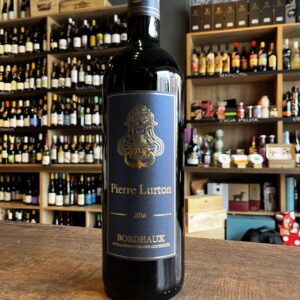 Bordeaux Pierre Lurton is a wine produced by Pierre Lurton in his namesake wine cellars. He draws directly from his knowledge acquired in the most prestigious properties of Bordeaux. Thus, this wine is rigorously selected by Pierre Lurton.The colour of the label also reflects the classic colour of the mansions of Gironde´s capital.
Bordeaux Pierre Lurton is a wine produced by Pierre Lurton in his namesake wine cellars. He draws directly from his knowledge acquired in the most prestigious properties of Bordeaux. Thus, this wine is rigorously selected by Pierre Lurton.The colour of the label also reflects the classic colour of the mansions of Gironde´s capital. -
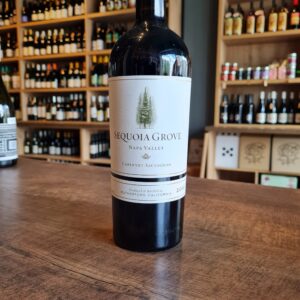 Family-owned winery Sequoia Grove was founded in 1979 in a 110-year old barn beneath a grove of Sequoia trees in Rutherford. Michael Trujillo joined the winery as assistant winemaker in 1981, becoming director of winemaking in 2002. His philosophy is based on balance in the vineyard, planting different blocks with different clones, and farming without pesticides. The family have been working with their partner growers for decades which gives them access to the very best quality fruit each year and allows them to create this complex wine which truly expresses the Rutherford terroir. The young wine is aged in oak barrel for 20 months which adds sweet spice notes and extra complexity to the finished bottling. The rich, powerful flavor profile makes this a winner with lovers of big, bold reds and a great match for red meats. Drink now through to 2030. Decanting is always recommended but is not a must
Family-owned winery Sequoia Grove was founded in 1979 in a 110-year old barn beneath a grove of Sequoia trees in Rutherford. Michael Trujillo joined the winery as assistant winemaker in 1981, becoming director of winemaking in 2002. His philosophy is based on balance in the vineyard, planting different blocks with different clones, and farming without pesticides. The family have been working with their partner growers for decades which gives them access to the very best quality fruit each year and allows them to create this complex wine which truly expresses the Rutherford terroir. The young wine is aged in oak barrel for 20 months which adds sweet spice notes and extra complexity to the finished bottling. The rich, powerful flavor profile makes this a winner with lovers of big, bold reds and a great match for red meats. Drink now through to 2030. Decanting is always recommended but is not a must -
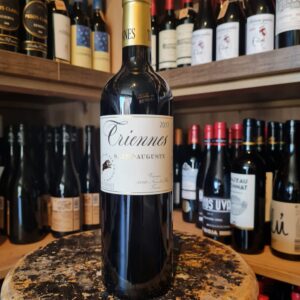 Saint Auguste is a selection of the best cuvées of Syrah, Cabernet-Sauvignon and Merlot. The robe is rich dark purple with bright ruby highlights. It offers alluring aromas of ripe black cherries, nutmeg and clove. It is full and concentrated and is a wine that can be enjoyed upon release and over the following ten to fifteen years.
Saint Auguste is a selection of the best cuvées of Syrah, Cabernet-Sauvignon and Merlot. The robe is rich dark purple with bright ruby highlights. It offers alluring aromas of ripe black cherries, nutmeg and clove. It is full and concentrated and is a wine that can be enjoyed upon release and over the following ten to fifteen years. -
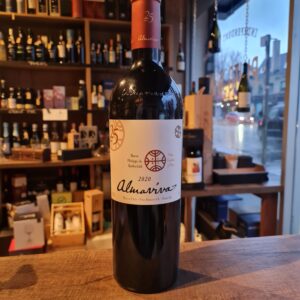 To celebrate the estate's 25th anniversary, the 2020 vintage by Almaviva is adorned with a special "25 años" label. Viña Almaviva was founded in 1997 following the collaboration between Baroness Philippine de Rothschild and Don Alfonso Larrain, President of Viña Concha y Toro. The Viña Almaviva project gives rise to fine Chilean wines that benefit from a rich French winemaking know-how and the unique expression of this Central Valley terroir. The name Almaviva, though it has an Hispanic sonority, belongs to classical French literature: Count Almaviva is the hero of The Marriage of Figaro, the famous play by Beaumarchais (1732-1799), later turned into an opera by the genius of Mozart. The label, meanwhile, pays homage to Chile’s ancestral history, with three reproductions of a stylized design, which symbolizes the vision of the earth and the cosmos in the Mapuche civilization. The design appears on the kultrun, a ritual drum used by the Mapuche. The label bears the name Almaviva in Beaumarchais’ own handwriting. Two great traditions thus join hands to offer the whole world a promise of pleasure and excellence. Located in the heart of the beautiful Maipo Valley, the Almaviva vineyard covers 50 hectares. The emblematic Bordeaux grape varieties thrive in this exceptional terroir. Almaviva has now become an essential reference for fine Chilean wines throughout the world. A particularly dry year, 2020 began with a cool, dry winter, resulting in a late budburst, particularly during the first two weeks of October. The spring and summer were marked by high temperatures but also by drought. These conditions favoured a rapid maturation of the vineyard and an early harvest, which ended three to four weeks earlier than in recent years. Despite this extreme climate and thanks to the rigour of the teams, the 2020 vintage reveals a fruity structure, a fresh expression and a rare tension.
To celebrate the estate's 25th anniversary, the 2020 vintage by Almaviva is adorned with a special "25 años" label. Viña Almaviva was founded in 1997 following the collaboration between Baroness Philippine de Rothschild and Don Alfonso Larrain, President of Viña Concha y Toro. The Viña Almaviva project gives rise to fine Chilean wines that benefit from a rich French winemaking know-how and the unique expression of this Central Valley terroir. The name Almaviva, though it has an Hispanic sonority, belongs to classical French literature: Count Almaviva is the hero of The Marriage of Figaro, the famous play by Beaumarchais (1732-1799), later turned into an opera by the genius of Mozart. The label, meanwhile, pays homage to Chile’s ancestral history, with three reproductions of a stylized design, which symbolizes the vision of the earth and the cosmos in the Mapuche civilization. The design appears on the kultrun, a ritual drum used by the Mapuche. The label bears the name Almaviva in Beaumarchais’ own handwriting. Two great traditions thus join hands to offer the whole world a promise of pleasure and excellence. Located in the heart of the beautiful Maipo Valley, the Almaviva vineyard covers 50 hectares. The emblematic Bordeaux grape varieties thrive in this exceptional terroir. Almaviva has now become an essential reference for fine Chilean wines throughout the world. A particularly dry year, 2020 began with a cool, dry winter, resulting in a late budburst, particularly during the first two weeks of October. The spring and summer were marked by high temperatures but also by drought. These conditions favoured a rapid maturation of the vineyard and an early harvest, which ended three to four weeks earlier than in recent years. Despite this extreme climate and thanks to the rigour of the teams, the 2020 vintage reveals a fruity structure, a fresh expression and a rare tension. -
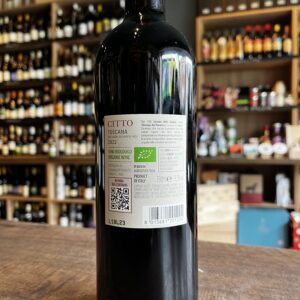
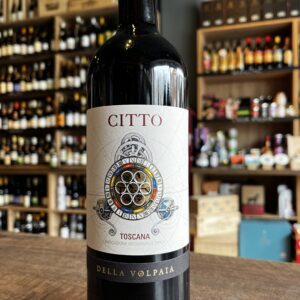 Castello di Volpaia overlooks the village of Radda in Chianti. The town was built in the 11th century as a fortified village on the border of Florence and Sienna. Although only part of the original protective walls and two of its six towers are still standing, the medieval layout and buildings within the village are still intact, making Volpaia one of the best preserved villages of its period. Just as it has been for the last 900 years, the entire village is intimately involved in the production of wine and olive oil. The cellars, bottling plant, barrels and olive press are nestled within the original stone walls that have been carefully restored by owners Carlo Mascheroni and Giovanella Stianti Mascheroni and their children, Nicolo and Federica. The nearly 114 acres of vineyards owned by Castello di Volpaia are at 1,300-2,130 feet above sea level, making Volpaia the highest winery in the Chianti region. The land is comprised of soils consisting largely of sandstone and a sedimentary rock from the Pliocene era. Citto is made from a selection of the best grapes from our IGT vineyards in the Chianti Classico and Maremma areas In the Tuscan dialect Citto means young boy. As from the land in comes from Citto is the young boy of Volpaia.As in the French tradition of the great Bordeaux Chateaux Chateau Mouton Rotschild has Mouton Cadet and Chateau Cheval Blanc has Petit Cheval, the same way Castello di Volpaia has his Citto. Pair with red meats and charcuterie
Castello di Volpaia overlooks the village of Radda in Chianti. The town was built in the 11th century as a fortified village on the border of Florence and Sienna. Although only part of the original protective walls and two of its six towers are still standing, the medieval layout and buildings within the village are still intact, making Volpaia one of the best preserved villages of its period. Just as it has been for the last 900 years, the entire village is intimately involved in the production of wine and olive oil. The cellars, bottling plant, barrels and olive press are nestled within the original stone walls that have been carefully restored by owners Carlo Mascheroni and Giovanella Stianti Mascheroni and their children, Nicolo and Federica. The nearly 114 acres of vineyards owned by Castello di Volpaia are at 1,300-2,130 feet above sea level, making Volpaia the highest winery in the Chianti region. The land is comprised of soils consisting largely of sandstone and a sedimentary rock from the Pliocene era. Citto is made from a selection of the best grapes from our IGT vineyards in the Chianti Classico and Maremma areas In the Tuscan dialect Citto means young boy. As from the land in comes from Citto is the young boy of Volpaia.As in the French tradition of the great Bordeaux Chateaux Chateau Mouton Rotschild has Mouton Cadet and Chateau Cheval Blanc has Petit Cheval, the same way Castello di Volpaia has his Citto. Pair with red meats and charcuterie


